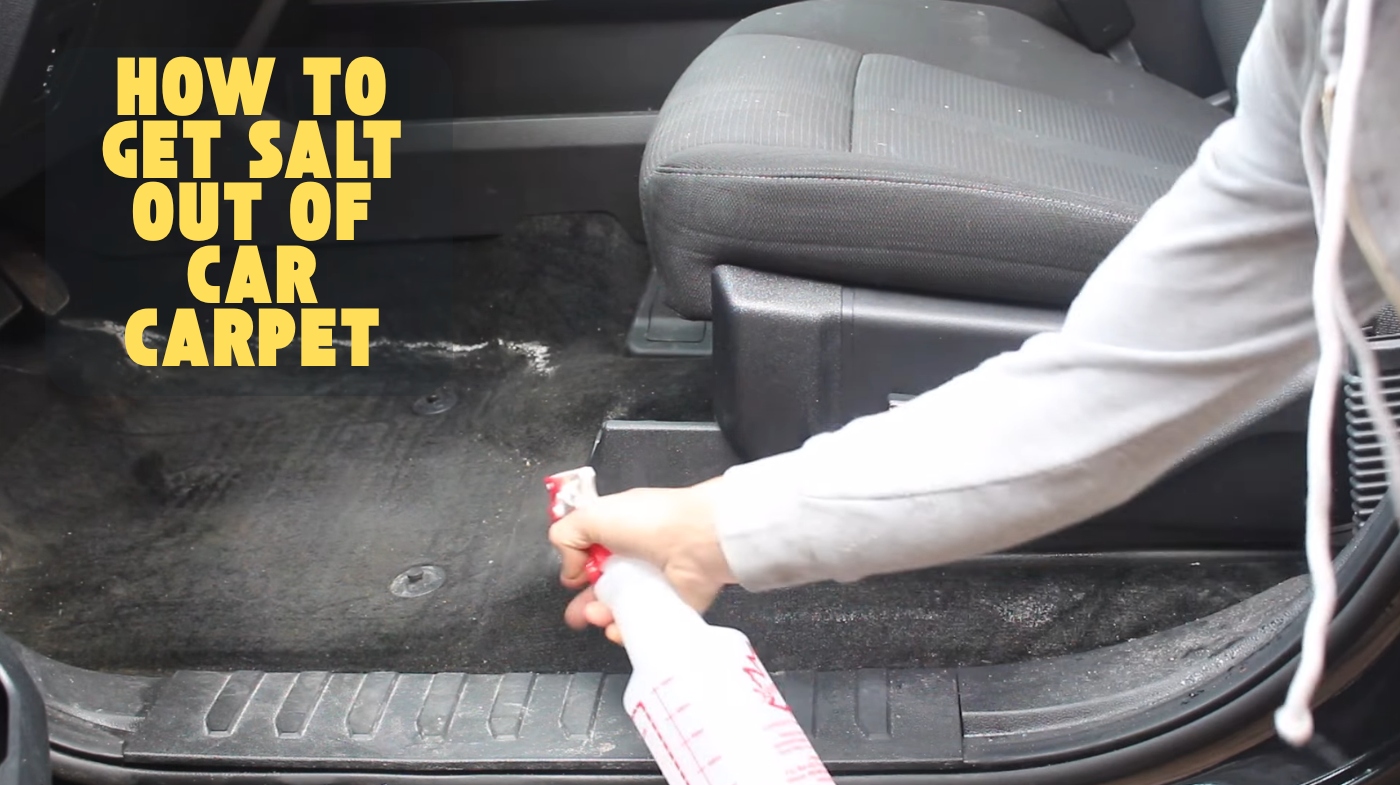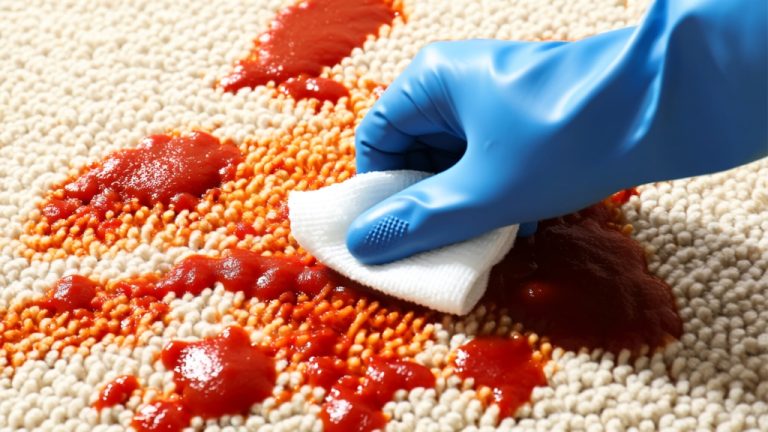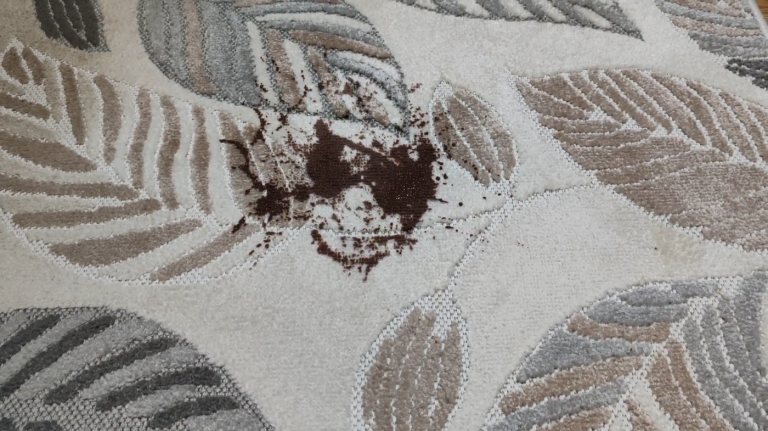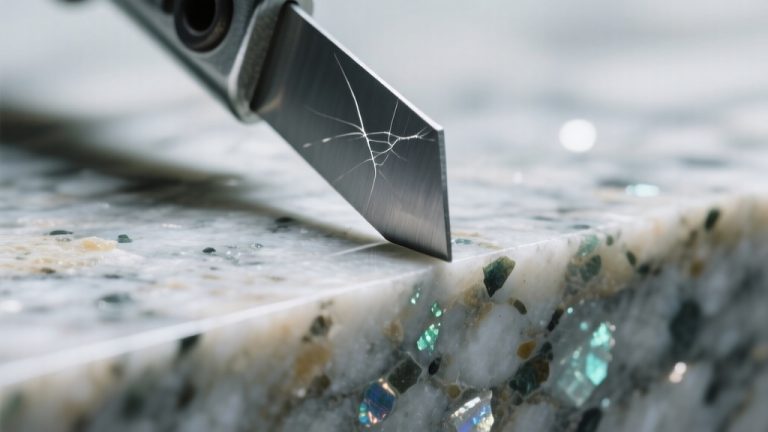How to Get Salt Out of Car Carpet? Simple DIY Method
To get salt out of your car carpet, start by vacuuming thoroughly and agitating salt deposits with a nylon brush.
Spray a mixture of equal parts white vinegar and warm water to dissolve salt crystals, then scrub gently and rinse with clean water.
Use steam cleaning for deep embedded salt, followed by extracting moisture with a wet/dry vacuum.
Finish by drying the carpet using fans and good ventilation to prevent mold. Implementing these steps helps you effectively restore your carpet’s condition and longevity.
Key Takeaways
- Vacuum and agitate dried salt crystals from car carpet using strong suction and a nylon brush before applying any cleaning solutions.
- Spray a mixture of equal parts white vinegar and warm water on salt stains, let sit briefly, then scrub gently and blot excess moisture.
- Use steam cleaning with high temperature and pressure to dissolve and lift deeply embedded salt deposits without damaging carpet fibers.
- Extract moisture thoroughly with a wet/dry vacuum and promote drying through cross-ventilation, fans, dehumidifiers, and moderate heat.
- Prevent future salt damage by using rubber mats, wiping shoes before entry, and regularly vacuuming carpets after exposure to salt.
Preparing Your Car Carpet for Cleaning
Before you begin removing salt stains, start by thoroughly vacuuming your car carpet using a vacuum cleaner with strong suction and appropriate attachments. Focus on brush heads and crevice tools to reach under seats and narrow spaces where dirt and pet hair accumulate.
Consider using an air compressor to blow out deeply embedded dust and debris, ensuring exhaustive dirt removal. This step helps reduce moisture retention in carpet fibers, which can exacerbate staining.
Next, use a nylon brush or old toothbrush to gently agitate dried salt deposits without damaging fibers, then vacuum again to lift loosened particles. This initial agitation helps prevent salt from setting further into the carpet fibers.
Conduct a detailed spot inspection to identify all affected areas, preparing your cleaning products and tools in advance.
Effective Homemade Solutions for Salt Stains
Below are simple DIY methods using household items to remove salt stains fast and safely.
Vinegar and Water
Although salt stains on car carpets can be stubborn, mixing equal parts white vinegar and warm water creates a powerful, natural solution that breaks down salt deposits effectively.
Prepare the mixture in a spray bottle or bowl, using warm—not hot—water to protect carpet fibers. This method is cost-effective and safe compared to commercial cleaners.
Apply it sparingly to stained areas, allowing a few minutes for the vinegar to dissolve salt crystals. Gently agitate fibers with a brush or fingers to lift salt without embedding it deeper.
Before applying the vinegar solution, vacuum excess salt thoroughly to enhance cleaning effectiveness.
Blot with a clean cloth to absorb loosened residue. Ventilate your car afterward to mitigate vinegar’s strong odor.
Let the carpet dry fully before vacuuming to remove residual salt and dirt. Repeat treatment if necessary. This chemical-free method excels at salt stain removal, preserving carpet integrity during winter months.
Dish Soap Mix
Building on the effectiveness of vinegar and water, a dish soap mix offers another practical approach to tackle salt stains on car carpets.
Mix about ½ teaspoon of mild liquid dish soap with one cup of warm water for light stains. Use one part soap to four parts warm water for larger areas.
Apply the solution with a cloth or spray bottle, gently scrubbing from the stain’s edges inward to avoid spreading. Avoid over-wetting to protect fibers.
Rinse thoroughly with clean warm water, blotting to remove residue, and use a wet-dry vacuum if possible. A wet-dry vacuum can help extract excess moisture after cleaning, speeding up the drying process.
Using Professional Carpet Cleaners and Shampoos
When dealing with stubborn salt stains on your car carpet, professional-grade cleaners and shampoos offer targeted solutions that go beyond basic cleaning methods.
Start by vacuuming thoroughly to remove loose salt particles and consider using biodegradable cleaners to minimize environmental impact.
Apply a specialized salt stain remover or carpet shampoo evenly over the affected area, allowing it to dwell for several minutes to dissolve embedded mineral deposits.
Because salt deposits actively break down interior materials such as carpets and mats, prompt cleaning is essential to prevent structural damage.
Use blotting, not rubbing, with an absorbent towel to lift dissolved salt without damaging fibers.
These products contain surfactants and fabric conditioners that break down salt crystals and protect carpet textiles from corrosion. For heavily stained carpets, multiple treatments may be necessary.
Steam Cleaning for Deep Salt Removal
Professional carpet cleaners and shampoos handle surface salt effectively, but deep-seated salt deposits require more intensive methods.
Steam cleaning uses high-temperature steam and pressure to dissolve and lift salt trapped in carpet fibers without chemicals. Before steaming, vacuum thoroughly and agitate salt with a nylon brush.
Because salt attracts moisture, prompt removal helps prevent mold growth and fiber damage. It is important to monitor the cleaning process to avoid overheating risks that can damage carpet fibers.
Use a steam cleaner with a brush attachment, moving slowly over stains. Wipe with a microfiber cloth to remove loosened salt immediately.
| Step | Action | Purpose |
|---|---|---|
| Vacuum | Remove loose salt | Prevent interference |
| Brush agitate | Loosen dried salt | Enhance steam penetration |
| Steam clean | Apply high-temp steam | Dissolve embedded salt |
| Microfiber wipe | Remove dislodged salt | Prevent residue build-up |
| Repeat as needed | Re-steam stubborn areas | Ensure complete salt removal |
Proper Drying Techniques After Cleaning
To prevent mold and lingering odors, follow the steps below for effective carpet drying:
Accelerating Carpet Drying
Although cleaning removes salt and grime from your car carpet, accelerating the drying process is crucial to prevent mold, odors, and fiber damage.
Start by extracting excess moisture using a wet/dry vacuum and blotting with absorbent microfiber towels—avoid rubbing to protect fibers. Using these tools helps reduce the chance of mold and mildew growth.
Position high-velocity fans to circulate air both above and beneath the carpet, propping it up if possible to enhance airflow.
Open car doors and windows for cross-ventilation and use portable electric heaters cautiously, maintaining ambient temperatures between 70-80°F to optimize evaporation without damaging fibers.
Combine fans with dehumidifiers to reduce indoor humidity, greatly speeding drying times. Monitor humidity with a hygrometer, and ensure all equipment is rated for automotive use.
Preventing Mold Growth
When you finish cleaning your car carpet, preventing mold growth hinges on properly managing moisture through effective drying techniques.
Avoid oversaturation during cleaning and promptly blot spills to reduce water retention. This is crucial because damp carpets can harbor mold. Understanding the role of oxidation and moisture can help in mitigating corrosion and mold risks in vehicle interiors.
Remove dirt and debris with vacuuming before drying to eliminate moisture traps. Promote airflow by opening doors and windows when possible, and use fans directed at damp areas to accelerate evaporation.
Employ air conditioning or dehumidifiers to lower humidity inside the vehicle or garage. Apply baking soda or drying powders on damp spots for at least 12 hours to absorb residual moisture before vacuuming. Replace absorbent cloths frequently during blotting to maximize water extraction.
Post-Dry Carpet Care
Proper drying techniques after cleaning your car carpet play a vital role in maintaining its condition and preventing mold growth. First, extract excess water using a wet/dry vacuum to minimize drying time and reduce the risk of moisture accumulation.
Then, create cross-ventilation by opening doors and windows if outside humidity is lower than inside. Position fans to circulate air under the carpet and use multiple units for even airflow. Using adjustable fans allows better directed airflow at carpets and seats.
Deploy a dehumidifier inside the car to reduce moisture, emptying its tank regularly to maintain efficiency. Keep ambient temperature warm but avoid direct heat sources that risk fiber damage.
Monitor humidity levels continuously to guarantee thorough drying, checking carpet backing and underlay for dampness. Elevate carpet edges when possible, and use air movers designed for automotive interiors to accelerate moisture evaporation effectively.
Preventing Salt Damage to Car Carpets
To prevent salt damage to your car carpets, you should focus on minimizing direct contact between salt and the carpet fibers. Start by using rubber or winter-specific floor mats with deep grooves to trap salt and moisture before they reach the carpet.
Remove and clean mats regularly to avoid salt buildup underneath. Installing all-weather mats is a proactive measure that saves time, money, and reduces stress during winter.
Always wipe or scrape your shoes after walking on salted surfaces to limit salt transfer. Apply a mixture of warm water and white vinegar to salted areas promptly, gently scrubbing with a soft brush and blotting dry to neutralize and remove salt deposits.
Maintain low interior humidity to prevent salt from dissolving and penetrating fibers. Using seat covers or removable protectors during winter months adds another layer of defense against salt damage.
Routine Maintenance to Keep Carpets Salt-Free
Although winter conditions increase salt exposure, you can keep your car carpets salt-free by establishing a routine maintenance schedule focused on regular vacuuming and gentle cleaning.
Vacuum carpets and mats after every winter trip using a crevice tool to reach tight spaces, preventing salt buildup and fiber damage. Using appropriate cleaning tools like microfiber cloths can help avoid damage during maintenance.
Treat salty areas with a mild solution of equal parts warm water and white vinegar or diluted dish soap; apply gently with a brush to lift salt without oversaturating fibers. Because salt stains result from minerals in ice-melting products and road salt, addressing them early helps prevent long-term damage.
After cleaning, blot excess moisture and allow carpets to air dry fully—use ventilation or fans to speed drying and prevent mildew. Employ protective sprays and heavy-duty rubber mats to reduce salt contact, and replace or clean mats regularly.
Frequently Asked Questions
Can Salt Stains Cause Corrosion on Car Carpet Backing?
Yes, salt stains can cause corrosion on your car’s carpet backing. Salt attracts moisture, which stays trapped against the backing material, encouraging rust on any metal components underneath.
The chloride ions in salt accelerate electrochemical corrosion processes, weakening adhesives and metal parts. If you don’t clean salt promptly, moisture retention leads to deterioration, mold growth, and structural damage beneath the carpet, increasing the risk of costly repairs or carpet replacement.
Is It Safe to Use Bleach on Car Carpets for Salt Removal?
You shouldn’t use bleach on car carpets for salt removal because it can damage fibers, cause discoloration, and weaken the carpet backing.
Bleach’s strong oxidizing properties may degrade materials and produce harmful fumes in confined spaces like cars.
Instead, use safer alternatives like a warm water and vinegar solution or carpet-safe cleaners. These options effectively remove salt without risking fiber damage or health hazards.
How Do Salt Stains Affect Car Carpet Warranty Coverage?
Isn’t it ironic that salt stains, which you might think are minor, often void your car carpet warranty? Warranties exclude damage from normal wear, including salt’s abrasive effects and chemical reactions that deteriorate fibers.
If you don’t clean salt promptly, providers can deny claims, viewing it as neglect. So, to protect your coverage, you must maintain the carpet meticulously and document regular cleaning—otherwise, salt damage isn’t covered.
Are There Specific Carpet Materials More Resistant to Salt Damage?
You’ll find that synthetic fibers like nylon and polypropylene resist salt damage better than natural fibers due to their moisture resistance and durability.
Carpets treated with water-repellent coatings also offer enhanced protection by preventing salt penetration. Conversely, untreated loop or cut pile carpets degrade faster when exposed to salt.
Opting for rubber mats can further shield carpets from salt exposure, extending their lifespan and maintaining appearance effectively.
Can Salt Stains Trigger Allergies or Respiratory Issues Inside the Car?
Yes, salt stains can indirectly trigger allergies and respiratory issues inside your car. Salt retains moisture in carpet fibers, creating a damp environment that encourages mold, mildew, and dust mites—common allergens.
These organisms release spores and particles that irritate your respiratory system, causing symptoms like sneezing, coughing, or asthma attacks.
Additionally, chemical residues from salt can aggravate mucous membranes, worsening respiratory discomfort in sensitive individuals.
Keep Your Car Carpet Strong and Salt-Free All Season Long
Think of your car carpet as a fortress protecting your vehicle’s interior from the harsh winter siege of salt. By preparing it properly, applying effective homemade or professional cleaners, and using steam for deep cleansing, you dismantle the enemy’s grip.
Dry thoroughly to prevent future damage, and maintain vigilance with routine care. With these precise steps, you’ll keep your carpet resilient, salt-free, and ready to withstand every storm that comes your way.







